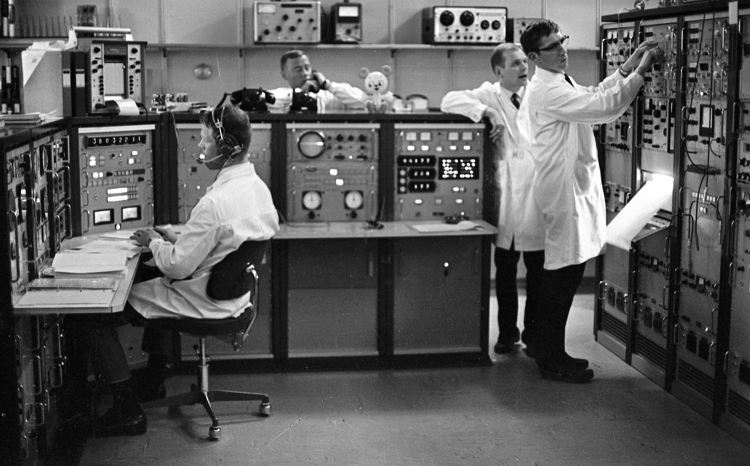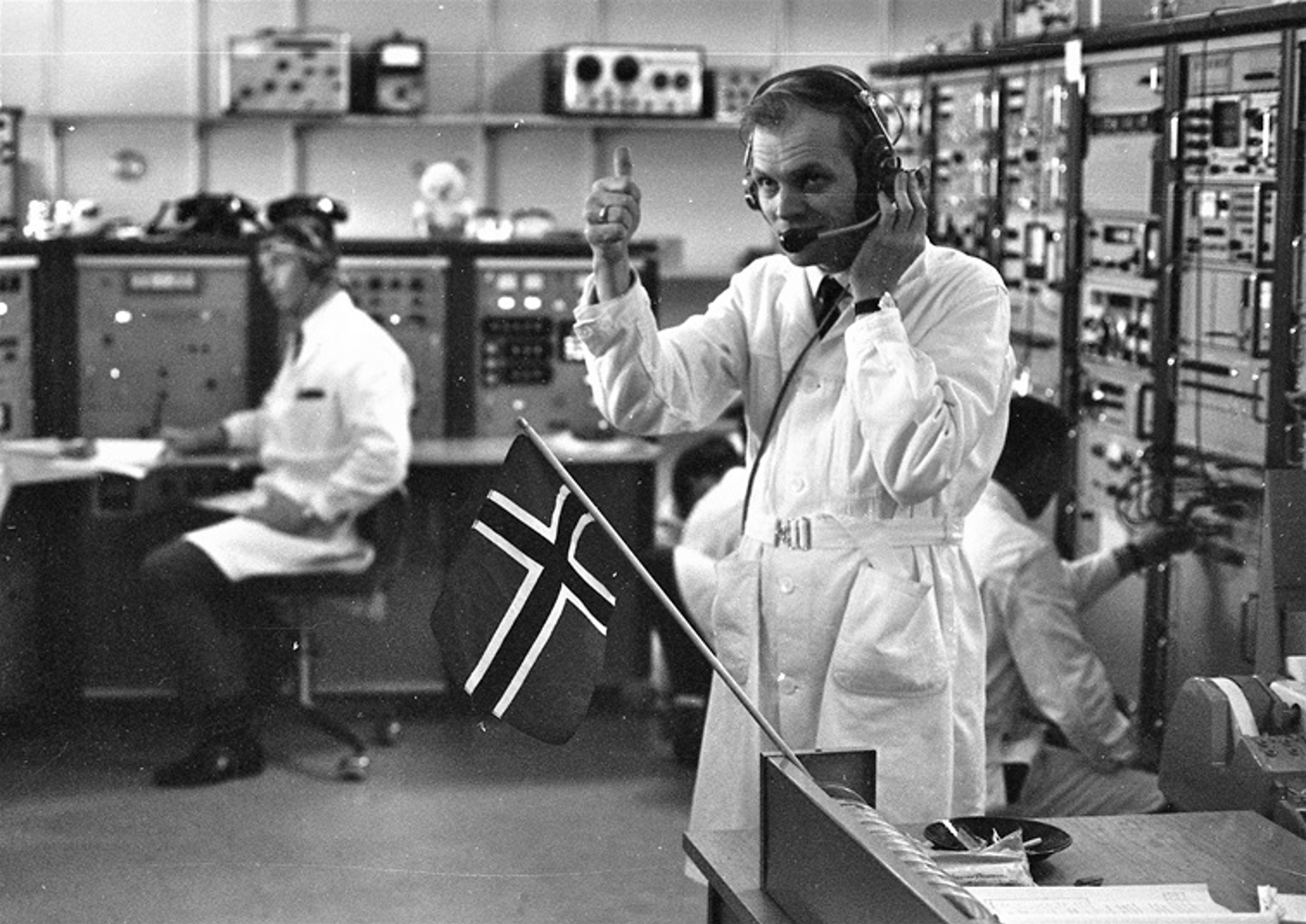The small TSS staff had meticulously adjusted all equipment according to ESOC instructions. We had used the nominal orbital parameters to program the antennas, consisting of azimuth and elevation look angles for the first satellite flyby. The look angles were entered into the antenna control unit to ensure smooth movement. The big question was therefore whether they were correct. Would ESRO-2B appear in the sector of sky at which the antennas aimed? The wait was unbearably long. But Launch Control had reported that the rocket had performed as planned. The tasks at TSS had been specified concisely. Hans Magnar Pettersen was to monitor the receivers; Kåre Amundsen was to check the PCM and telecommand equipment; and my tasks were to ensure that the antenna system functioned and carry out voice contact with the satellite controllers in Darmstadt. The Station Manager,Dagfnn Leiulfsrud, was of course present, and, as a back-up, so was Roald “Pedro” Pedersen, an expert hired in from the Andøya Rocket Range (ARR) for the initial effort. The simulations had indicated that the station was considerably understaffed. The critical instant was when ESRO-2B would fly into the antenna beam. The distance from the antenna to the satellite at that time would be about 3800 km. The predicted time to receive the signals, Acquisition of Signal, (AOS), from the satellite was set to be 03:31:00 Z.

The team at Tromsø Telemetry Station was able to celebrate that the first support of a satellite launch from the new station in Tromsø was successful. The world´s most advanced ground station at the time, with a Norwegian–developed computer connected, even before NASA had it.
